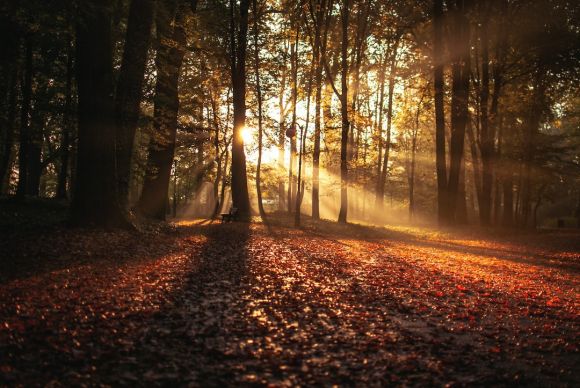Seasons are a fundamental part of our lives, shaping the world around us and influencing the behavior of all living organisms. In terrestrial ecosystems, this dance of seasons is particularly fascinating, as plants, animals, and even microbes adapt and respond to the changing environment. From the vibrant colors of autumn leaves to the sound of birds chirping in spring, each season brings its own unique charm and challenges. Let us dive into the captivating world of terrestrial ecosystems and explore the intricate connections between seasons and the natural world.
Spring: A Burst of Life
As winter fades away, a burst of life emerges in terrestrial ecosystems. Spring is a time of renewal, as plants awaken from their winter slumber and begin to bloom. The once barren landscapes transform into a kaleidoscope of colors, with flowers and trees bursting into full bloom. This explosion of life is not limited to plants alone; animals also awaken from hibernation or migrate back to their breeding grounds. Birds return from their winter homes, filling the air with their melodious songs, while mammals emerge from their burrows to enjoy the abundance of food.
Summer: The Season of Abundance
With the arrival of summer, terrestrial ecosystems reach their peak of productivity. The warm temperatures and longer days provide ideal conditions for plants to grow and thrive. Green meadows are dotted with colorful wildflowers, while forests become dense with foliage. This abundance of plant life supports a wide variety of animals, from insects buzzing around flowers to herbivores grazing on the lush vegetation. Predators, in turn, take advantage of the abundance of prey, ensuring a delicate balance in the ecosystem.
Autumn: Nature’s Color Palette
As summer comes to a close, terrestrial ecosystems prepare for the arrival of autumn. This season is characterized by a stunning display of colors, as leaves change from vibrant greens to hues of red, orange, and yellow. The changing foliage not only creates a picturesque landscape but also serves an important ecological purpose. As temperatures drop, deciduous trees shed their leaves, allowing them to conserve energy and survive the harsh winter conditions. These fallen leaves become a vital source of nutrients for the soil and the countless organisms that depend on it.
Winter: Embracing the Cold
Winter brings a drastic change to terrestrial ecosystems, as temperatures plummet and the landscape is blanketed in snow. Many plants enter a state of dormancy, conserving energy until the arrival of spring. Animals have developed various strategies to cope with the cold, including hibernation, migration, and adaptation to the frigid conditions. In this season, survival becomes a challenging task, and resources become scarce. However, winter also offers its own beauty, as snow-covered landscapes create a serene and peaceful atmosphere.
The Delicate Balance
The dance of seasons in terrestrial ecosystems is a testament to the intricate balance of nature. Each season plays a crucial role in shaping the environment and influencing the behavior of its inhabitants. The changing seasons provide cues for reproduction, migration, and adaptation, ensuring the survival and continuity of species. The delicate balance between plants, animals, and their environment is a complex web of interactions that has evolved over millions of years.
Appreciating the Dance
As we marvel at the beauty and complexity of terrestrial ecosystems, it is important to remember our role in preserving and protecting them. Human activities, such as deforestation, pollution, and climate change, have disrupted this delicate dance of seasons, causing irreparable damage to our planet. By understanding and appreciating the interconnectedness of all living organisms, we can work towards sustainable practices that will allow terrestrial ecosystems to thrive for generations to come.
In conclusion, the dance of seasons in terrestrial ecosystems is a mesmerizing spectacle that showcases the resilience and adaptability of the natural world. From the awakening of life in spring to the quiet serenity of winter, each season brings its own unique charm and challenges. By recognizing and respecting the delicate balance of nature, we can ensure the preservation of these remarkable ecosystems for future generations to enjoy.





